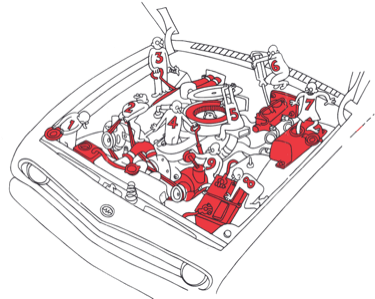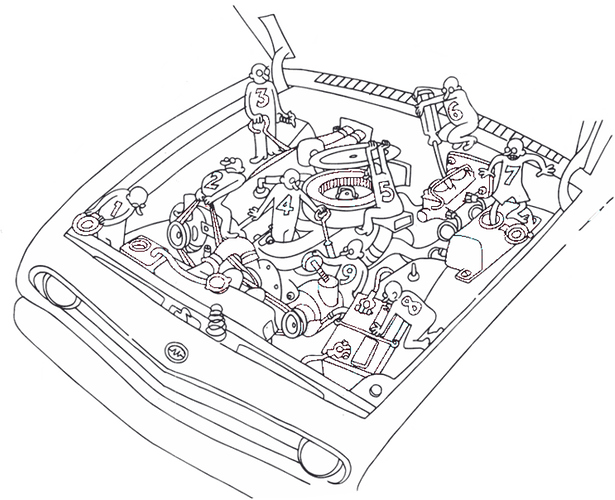Created By: Lindsay Dombrowski & Kyler Allen

Age Range/Population:
10+ years old
Individual or Group
Those interested in mechanics/engineering/cars
Materials Needed:
Scratch paper
Writing utensil
Optional: Colored pencils, markers,
Picture/Image reference to under the hood of a car
Instructions:
Explain to the client how therapy involves focusing on different components of our minds and lives. This is similar to how people can look under the “hood of the car.” Sometimes, clients can be in “cruise control” where they do not attend to or are not aware of what they are experiencing. The therapist can use the provided picture or have the client draw their own picture representing what is under the hood of their “car.” The therapist and client will work together to label components (thoughts, feelings, and experiences) as strengths, weaknesses, and concerns to attend to in session. The client will be able to identify what needs to be worked on first and notice what parts influence other parts, which may be hindering or enhancing the function of their “car.” Coloring the components of what is under the hood could be a fun and mindful exercise to help the client further label strengths, weaknesses, and the level of importance for each.
Rationale, Expected Results, and Troubleshooting:
Carmody and Baer (2007) wrote that elements of mindfulness include observing, describing, and acting with awareness. For the purpose of this exercise, clients are to imagine their thoughts and concerns/problems through the metaphor of an engine. Fine tuning an engine is to make sure it is functioning to the best of its abilities. Parts of the engine can be considered as the client’s thoughts, feelings, strengths and weaknesses. This exercise may serve as a way for the client to focus on and conceptualize the factors or elements in life that take precedence for maintenance and/or repair. Sometimes, a client can be on “cruise control” and not acknowledge or recognize aspects of themselves that may need repair, maintenance, or further development. The ability to attend or notice one’s internal and external experiences (sensations, emotions, and cognitions) may make therapy more effective (Carmody and Baer, 2007). One thing the therapist should be aware of is the current developmental abilities of the client. The therapist should choose to present the intervention/activity that best aligns with the client’s developmental abilities, one that invites the client to a deeper understanding of themselves.
Carmody, J., & Baer, R. A. (2007). Relationships between mindfulness practice and levels of mindfulness, medical and psychological
symptoms and well-being in a mindfulness-based stress reduction program. Journal of Behavioral Medicine,31(1), 23-33.
Mindful awareness: How it can help you | Dubai Psychologists & Counselling | The MapleTree Center DMCC. (2016). Tmtcdubai.com. Retrieved 8 October 2016, from About us - Dubai | The MapleTree Center DMCC |Dubai | The MapleTree Center DMCC |
Originally posted on the Geek Therapy Wiki, hosted on the now-defunct Wikispaces platform, as part of Dr. Patrick O’Connor’s course Geek Culture in Therapy.
